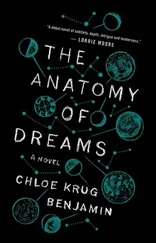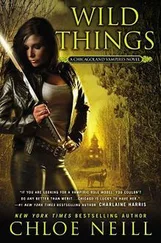The next six or seven blows were to the canvas itself. With her meat cleaver the young woman started at the nape of Venus’s neck, then on to the spot between her creamy white shoulders, then downwards, aiming wherever her wrist felt pulled. She kept plunging and plunging, continually amazed at the efficiency of this small instrument she had bought with her last shillings at the ironmonger’s on Theobald’s Road. Fastened inside her sleeve with a chain of safety pins, a light tap to the last pin was all it had taken to release it.
Two Baedekers, perfectly aimed, came crashing against her own nape. She turned and saw two angry German tourists. People came at her from all directions. Hands grabbed her, dragged her, pulled and held her down. The floor was covered in fragments of glass. But it was too late. With her cleaver she had attacked flesh far more treasured than any slab of meat, and that was the point, she later said, to destroy the most beautiful woman in mythology in order to protest the imprisonment of another ‘beautiful’ woman, Emmeline Pankhurst, a fellow suffragette.
The angry crowd became a confused heap. It tumbled out of the room, into the stairwell, down the stairs, creating pandemonium all around, while back in Room 17, immune to the commotion, a torn Venus continued to repose in her satin boudoir while Cupid held a mirror up to her tranquil face.
The account in The Times the next day was extravagantly anatomical: a cruel wound in the neck, for three or four inches it runs almost vertically, and spreads out an inch wide; another severe cut aggravated apparently by the chopper’s having been twisted a little as it withdrew for the next blow; a broad laceration starting near the left shoulder and roughly forming, with two or three cuts, the letter N; two of the limbs of that letter are six or eight inches long, and the third is a gash extending right beyond the body and some inches through the drapery below it; the other cuts are cleanly made in the region of the waist… downwards nothing remains of the glass except splintered fragments filling the base of the frame and spreading out in front …
Each time Ted told the story I would listen enraptured as he described the way in which from one second to the next a small, nervous figure in grey, the grey of an overcast day, had morphed into an arrow of fury and begun hacking away at the nude woman on the wall. He had been the very warder assigned to Room 17 in those days before rotation.
Startled by the shattering glass and the frenzied movements of the detective, who until then had been sitting calmly with his newspaper, my great-grandfather had started to run over but slipped on the floor, which had just been assiduously polished, and, losing his balance, landed on his face, scarcely registering the fall as he scrambled back to his feet. For the rest of his life, he would ask himself what would have happened had he crossed those seven yards and reached the suffragette, whether he would have wrestled her to the floor and torn the cleaver from her furious hand, or whether he would have lost courage at the last minute or one of his fingers in the struggle. In the end, it was a collective effort that brought down the small woman and by the time he’d arrived a tumbleweed of fists, boots and curses had erupted around her.
Looking back, I don’t know what side I would have been on. When Ted told me his stories I assumed there could only be one side. But I loved him just a tiny bit more for not having reached her in time.
Hours after the attack, the Board of Trustees held a special meeting in which it was decided that the Galleries, which had closed within minutes of the outrage, would remain shut for another two weeks. Further measures were discussed, then implemented: that not more than half the Exhibition Rooms in the main floor be opened on alternate days, that the staff be concentrated and increased, that the Treasury make allowances to employ a number of commissioners to in turn provide custodians to look after the rooms, that all visitors surrender muffs, stoles, bags, parcels, sticks and umbrellas at the stalls at the entrance, that the most important pictures in the Gallery be protected by thicker panes of glass, that the director order experimental barriers to be placed in certain rooms, that all students, before admission, make a solemn declaration not to wilfully injure the pictures.
Those were anxious days, Ted would say, anxious days in the museum. Warned against the pilferer and the crank, guards remained on the lookout for meat cleavers and umbrella sticks. Even before Mary Richardson — known as Polly Dick to those who loved her, Slasher Mary to those who didn’t — Ted had been asked to keep an especially sharp watch on female visitors of all ages, especially those not accompanied by men. A year earlier, he and his colleagues had received copies of photographs of militant suffragettes taken by the government. Staff were asked to study these surveillance pictures and identify any of the women should they happen to enter the rooms.
Ted had kept one, a silver print mounted on to an identification sheet in the folder of Gallery documents he stowed in a drawer of his bedside table, and one day, on my fourteenth birthday, he showed it to me, only once, as if a longer exposure might hurt my eyes. I remember how struck I was by the eight black and white numbered portraits of for the most part attractive, proud-looking women, the angular cut of their jackets, the long skirts, the high collars, most with a pin or a tie fastened at the centre as if holding everything in place. Their hair seemed to be worn in three varieties: pulled tightly back, tucked into a hat, or else falling over their shoulders in tresses: sternness, modesty, abandon.
Taken largely unawares, the pictures showed the suffragettes between or shortly after performances, either being led away by the arm or else in a rare moment of repose, a gleam of disquiet in the eyes of the woman walking down the street, pausing at a corner with her parasol, touring the prison yard. They were such a far cry, these strange portraits, from the painted women at the Gallery, and though Ted only brought them out once their faces lodged themselves in my mind.
Madmen and hysterics are born into every generation, Ted would say, and though I knew he wasn’t referring to me something inside would inevitably shudder, his words a coin dropped into a deep well whose bottom was reached only decades later. Remember, he’d say, appearances can be misleading, just look at the havoc wrought by this small woman in grey. At five feet five and a half inches, look at the scale of damage she inflicted on the large, magnificent painting, into which her entire frame would have fit… There’s no telling…
Yet in the end, the Rokeby Venus hadn’t cost much to repair, thanks to the supposed intervention of one aptly named Helmut Ruhemann, chief restorer at the Gallery, who almost certainly drew on a lot of patience and tranquillity, or Rühe , our German colleague Dieter once suggested, to carry out the task. Well, most say it was Ruhemann who restored Venus to her previous state but my great-grandfather always insisted it was one Horace Buttery, a highly respected restorer of paintings from collections in London, Oxford, Cambridge and beyond, who did the actual work. Just how, Ted wanted to know in his final years, did the credit go to Ruhemann, who, as far as he understood, had merely cleaned the Rokeby Venus rather than restored her.
Whatever the truth, Helmut Ruhemann, native of Berlin and later of various addresses in North London, was, in the eyes of museum directors, one of the great immigrant restorers of the time. Unlike most of his contemporaries, he boldly advocated the complete removal of varnish in the cleaning of paintings, of which he limited himself to European easels, and insisted that any attempt at leaving even a thin layer of the old varnish would nearly always fail, and prevent the painting’s reawakening. Light has to pass twice through a varnish, he pointed out, on its way to the picture surface and then on its way back to the viewer, so the light-absorbing effect of a dark varnish is doubled.
Читать дальше












